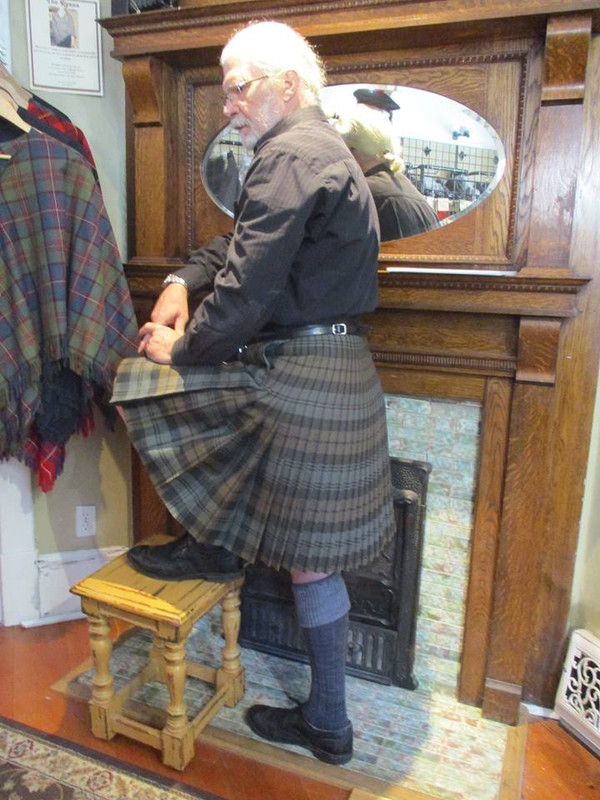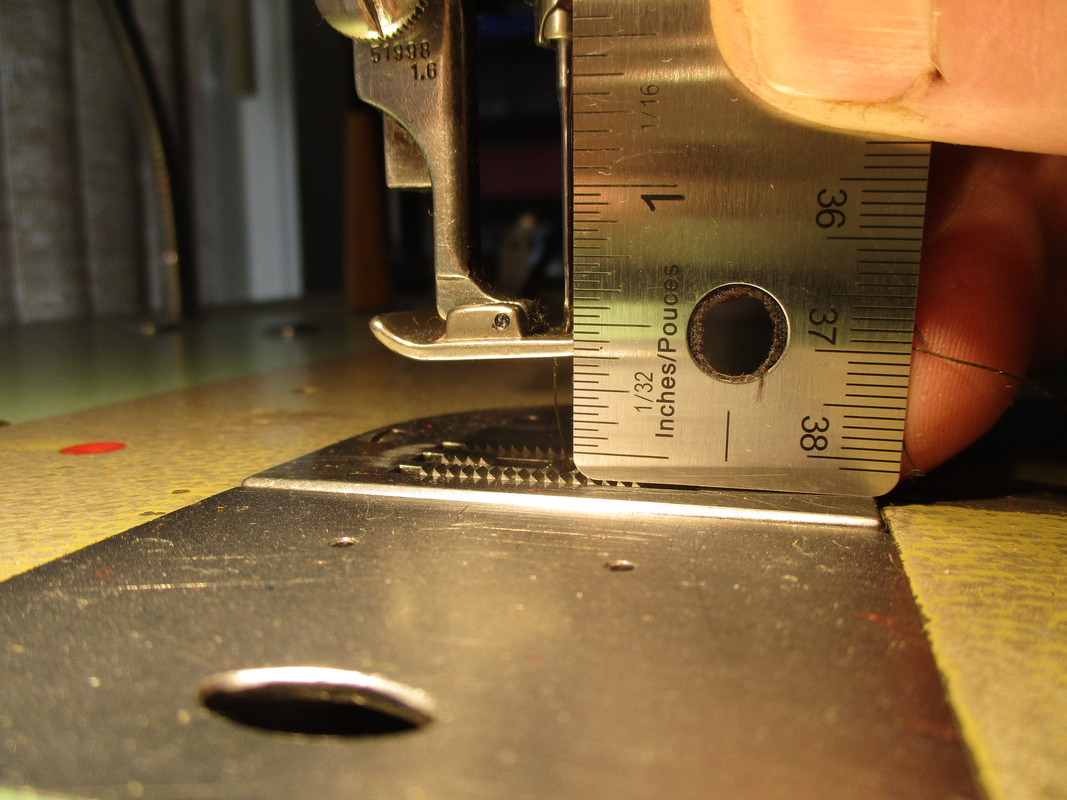If I can offer some advice from an almost 20 year career in kiltmaking, making kilts, both hand stitched and machine stitched, out of almost every type of fabric imaginable.
I found Denim fabric to be the absolute worse fabric to make a kilt from. It is the reason that you see so few Denim kilts offered by professional kilt shops.
Denim is a 100% Cotton fabric. And like all Cotton fabrics it is rugged but continues to shrink over its lifetime. This is why it makes a good fabric for blue jeans and why you see the puckers at the side seams. Every time Denim is washed it shrinks a little. Your legs inside tend to stretch the fabric back out but in stretching it weakens the fabric. That is why the legs just above the knees is one of the places that the fabric, not the seams, fail first.
A kilt has no legs inside the pleats to stretch the pleats back out so they will shrink up to the point where they tend to splay out sort of like a ballet tutu.
Cotton fabrics also do not hold a crease and wrinkle easily and fast. This is why cotton shirts needed to be ironed each time they were washed.
This means that a Denim kilt will not hold the pleat creases. You must topstitch each and every pleat edge, inside and out, for the garment to retain its shape.
And then iron out the wrinkles after every washing.
The Art of Kiltmaking covers the methods to make a kilt from hard worsted spun, tightly woven, Wool fabric. It does not cover the methods to make a kilt from any other types of fabrics.
TAoK covers the methods to hand stitch Wool fabrics and does not cover the methods needed to machine stitch a kilt.
And as you have chosen Denim, hand stitching will be very difficult. Bordering on impossible, due to how hard and stiff the fabric is and how hard it is to push a hand sewing needle through it.
I do not know how many times I have heard the argument that goes sort of like - "I will make a Denim 'practice' kilt first. Then I'll make a Wool Tartan kilt."
And what is the result of thinking like this? In the end you have what looks like a practice kilt. And are never satisfied and happy with the result and you never get around to making your Tartan kilt.
Where if you start with good quality kilt Wool you can practice all you want - rip out as necessary - and in the end you have your own Tartan kilt that you can proudly wear and boast - "I made it myself".
My advice was always, that if your final goal is to make a Wool Tartan kilt, to buy the best, highest quality, Wool Tartan fabric that you can afford. This will be almost exactly the same as if you ordered a custom made kilt. The cost of the fabric is set by the mill.
Where you save money by making your own kilt is in the labor.
So buy the good stuff first.
And one of the great things about good quality Wool fabric is that it is amazingly easy and forgiving to sew. If you mess up a line of stitching you can simply rip those stitches out and do them again. Over and over if needed. And the fabric will be able to do that many times, and still look brand new.
Another great thing about sewing a Wool kilt In Accordance With (IAW) TAoK, is that the process is totally different from regular sewing like making a shirt or a pair of trousers. In kiltmaking, right up until the step where you cut away the inside of the pleats to thin the back of the kilt, you are dealing with one, long piece of fabric. This is totally different than regular sewing where you lay tissue paper pattern pieces on the fabric and cut out different shapes.
If the size does not come out right, you don't like the stitching or the look, you can simply rip out all the stitching and you can begin again. And again if necessary.
This cutting away inside the pleats is near the end of the process so you have many chances to make all the mistakes you want and you will not hurt the fabric or destroy your investment.
If you really want a Denim kilt, great. But invest in a good sewing machine first. And then practice using that machine until you can sew an absolutely straight, true, line of stitching in Denim every time. Once sewn, these line of stitching will not come back out like hand stitches in Wool.
You will need an industrial type of sewing machine.
Not because they are more powerful. Any sewing machine will sew through multiple layers of leather. That is just a sewing machine salesman trick.
The main difference between an industrial and a home sewing machine is that everything on the industrial machine is adjustable. (and repairable)
You will need the pressure foot to be adjustable to at least 1/2 " high.
Very, very few home sewing machines can be adjusted like this.
And industrial sewing machines usually have a knee lift pressure foot. This leaves both hands free to guide the fabric but does take some practice to get used to.
In my kilt shop I had 4 Pfaff 138-6 machines. (Model 138 with a 6mm zig-zag) These were the industry standard workhorses for over 50 years. My machines were made in 1962, 2 from 1964 and a 1972 machine. These are not made in Germany anymore, but used machines in perfect working order can be found for around $600.00-$800.00 usd.
And yes, this is a machine stitched 16oz Wool Tartan kilt.



















Bookmarks